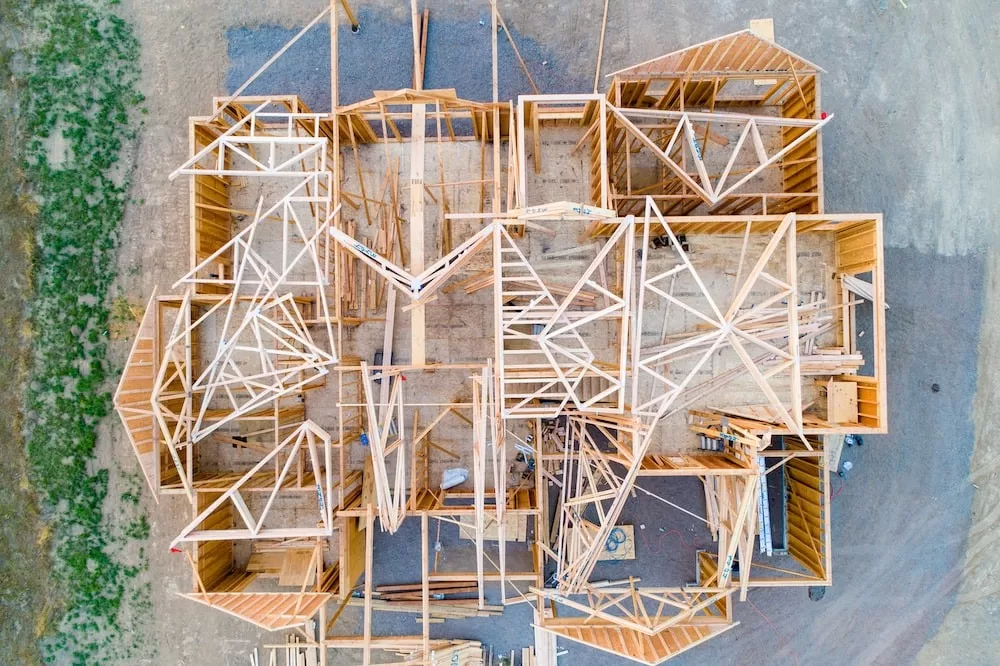Building a home is an exciting yet challenging endeavor. The process involves turning dreams into reality by constructing your ideal living space.
However, the path is filled with important decisions, especially if you are building in an area with distinct climatic conditions.
The climate, terrain, and weather patterns where you build can directly impact the home’s design, materials, and construction methods.

For instance, let’s consider Bozeman, Montana. Located near the Rocky Mountains, Bozeman experiences a semi-arid continental climate with cold winters (minimum temperatures reaching 13F) and warm summers (maximum temperatures reaching 83F). The region sees substantial snowfall in winter months, while summers are sunny and dry.
This extreme shift in seasons, along with the potential for heavy snow loads, strong winds, and freeze-thaw cycles, presents unique factors that need special consideration when building a home in Bozeman.
Aspects like insulation, roof design, foundation depth, drainage, and even road access require careful planning suited to the area’s climate.
Overall, the excitement of building your dream home is accompanied by several critical considerations specific to the location.
Heeding the locale’s climate, codes, and challenges will ensure your home stands strong. Here are eight important factors to consider when building your own home.
When custom building a home, opting for local and sustainable materials can enhance durability while reducing environmental impact.
In a location like Bozeman with extreme winters, sourcing metals and alloys engineered for the region’s temperature fluctuations is crucial.
Additionally, the expertise involved in shaping these materials matters greatly. For instance, welding is commonly used to fuse and sculpt metals in homebuilding.
It creates structural joints that must withstand seasonal stresses like heavy snow loads, which is important in places like Bozeman.
Working with qualified local welding Bozeman MT services will allow you to create a home that’s built ideally for the area.
These local experts understand important things like preheating metals before welding in cold months and using techniques to prevent cold cracking. They also employ best practices for safe outdoor welding during winter.
Insulation is important for energy savings and comfort in areas with cold winters.
High-quality insulation with proper sealing in walls, attics, and crawl spaces helps retain heat and lowers utility bills.
You can upgrade to modern triple-pane windows with inert gas fills for further insulation.
Read Also :
Strategic use of insulation coupled with energy-efficient heating and appliances can make homes in cold climates a lot more efficient.
And monitoring insulation levels during construction and performing quality checks ensures your home is optimized for efficiency.
In locations prone to freeze-thaw cycles and soil expansion from moisture, foundation design is vital. Extending footings deeper below the frost line prevents heaving and cracking.
Waterproofing treatments like dampproofing or membrane layers protect foundations from seepage and moisture damage.
Proper drainage around the foundation through systems like French drains also directs water away, preventing erosion and keeping foundations stable.
A qualified structural engineer can recommend the optimal foundation design for the area’s soil conditions.
The roof design is another important factor for regions with heavy snowfall.
Steeply pitched roofs allow snow and ice to easily shed without accumulating and prevent dangerous buildup that can damage the structure.
The pitch should be at least 6:12, but steeper 8:12 or 12:12 pitches are ideal for snowy regions.
You can also use online roof pitch calculators that can assist you in determining what length rafters you will need based on the pitch of your roof.
The shape of the roofline also plays a role. Simple rooflines without intersecting sections, valleys, or changes in pitch help snow slide off uniformly and reduce areas where snow can gather and stress the structure.
Safety should be paramount for any home-building project. Implementing suitable safety measures is vital for regions prone to specific weather events.
For example, installing an emergency backup generator provides power even during outages in areas with regular heavy snow or ice storms.
Proper roof bracing and anchors can fortify against wind damage.
Fire-resistant construction materials and buffer zones around the structure should be used in wildfire zones.
When building a home, consider how you want to use your outdoor spaces based on the climate.
For instance, building a covered patio or porch area allows you to enjoy being outside, even during rainy seasons.
Installing a firepit, hot tub, or heated patio creates an inviting outdoor space even in colder months.
Strategically planting trees provide shade in summer and sunlight in winter after leaves are shed.
Thinking ahead about seasonal outdoor usage lets you maximize livability throughout the year.
In areas prone to freezing winters, plumbing system design needs careful attention.
Exposing water lines or water-using fixtures like hose bibs to exterior walls puts them at risk of freezing.
Instead, designing an interior plumbing system insulates the pipes.
Using heat tape, pipe insulation, or in-ground freeze-proof hydrants prevents iced pipes and burst plumbing disasters for outdoor plumbing components.
Proper drainage around the home also protects the foundation from the seasonal freeze-thaw cycle’s heaving effects.
Adhering to local building codes and regulations is crucial when constructing a home.
Most municipalities and counties have specific requirements based on climate factors, common weather events, and even potential natural disasters in the region.
For example, regulations will guide earthquake-resistant structural design in a city prone to earthquakes. In flood zones, elevation or floodproofing rules apply.
Studying the local building codes helps you avoid issues or rework down the line.
Building a home is a complex process with many variables to consider, especially concerning your location’s climate and prevalent weather conditions.
Carefully considering all the factors mentioned in this article allows you to create an ideally adapted home.
Also, you can partner with knowledgeable local architects and contractors who are well-versed in the region’s unique needs; this will set your home up for comfortable, safe, and sustainable living for years.